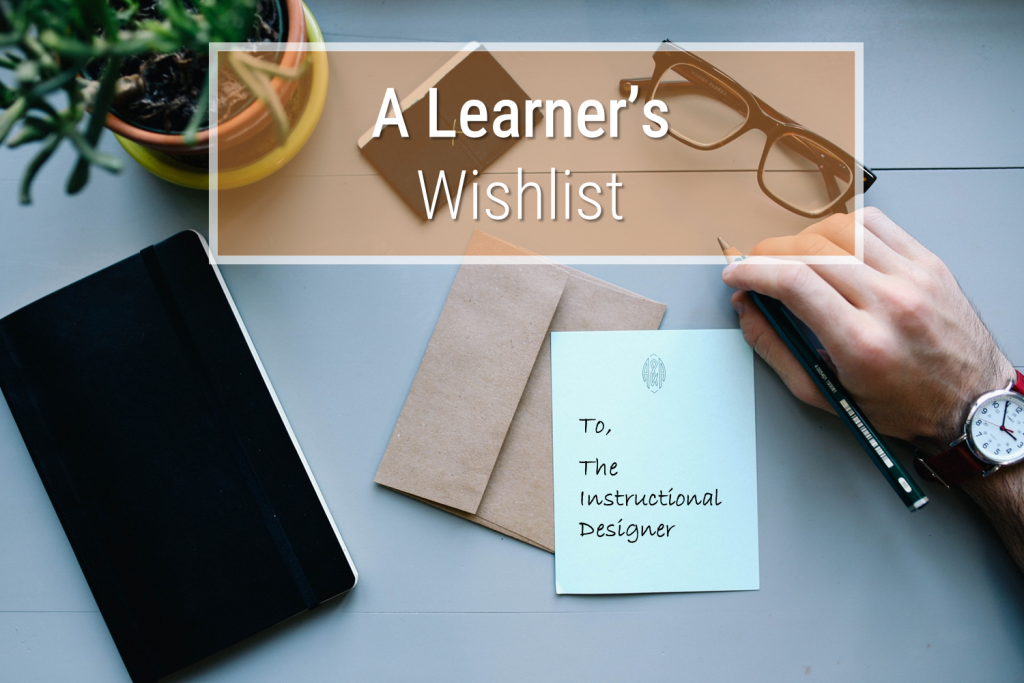Dear Instructional Designer,
I hope that the course that you are developing to improve our performance is coming out well. My team speaks highly about how our training framework is upgrading across the organization. Also, we have you to chart the future training plan.
As an instructional designer you connect our managers – who have great expectations from the learning outcomes, to us – the learners who will implement the learning achieved at work.
To build a course that helps us in the long run, may I suggest some important parameters, which when met will surely increase our interest to learn, and help us do better.
- Set us free to learn. It is unfair to either assume that all of us have a prerequisite understanding of the fundamentals, or the complete batch possesses no knowledge at all. Our team has a motley of young and experienced learners who come with a varied degree of experience.While my junior Pete who has recently joined, would like to through the basics first; my colleague John, already a seasoned employee would like to revise the latest updates. Leaving the navigation open will help us access the necessary information as and when we need, without the trouble of going through unwanted data.
- Set our expectations straight right from the beginning. It is confusing when we do not know what are we going to learn and how will it help us carry out our jobs with higher efficiency. Before we dive in, we would like to know:
- What is the purpose of this course? Why me?
- What am I supposed to do with all the training that I will get?
It is a nice idea to begin the training with a blueprint of what we are about to learn and how the training will help us at our jobs.
- Make it realistic. Our team loves practical examples. We learn better when we relate the training to our real-life situations. Having such examples help us map the solutions and recall quickly when we face a similar situation at our workplace.
- Make us do. Blame it on our low and fragile attention span, we learners tend to lose attention if we do same set of actions repeatedly (such as Click Next to Continue). How about a nice scenario where you ask my response to a given situation. That way we’ll keep our eyes peeled (we don’t want to get caught off guard). The more you engage us, the more we will stay (and hence learn).
- Help us prove ourselves. What good a course is without a measure to check if we have absorbed the content well, and are able to recall and apply the same? I suggest a proper testing mechanism to find out our achievements at the end of the training. A good assessment at the end of the course will:
- Boost learners confidence – to recall and apply the training instructions as and when necessary
- Increase employers’ trust – in us, now that we have cleared the assessment
- Ascertain the efficiency of the training imparted – and update the training
- Motivate peers – to learn seriously and level or surpass the scores their colleagues’ score in the tests
I hope these feedback help you define our learning needs in a better way.
Yours
Sincerely,
A grown-up (and a somewhat demanding) learner
